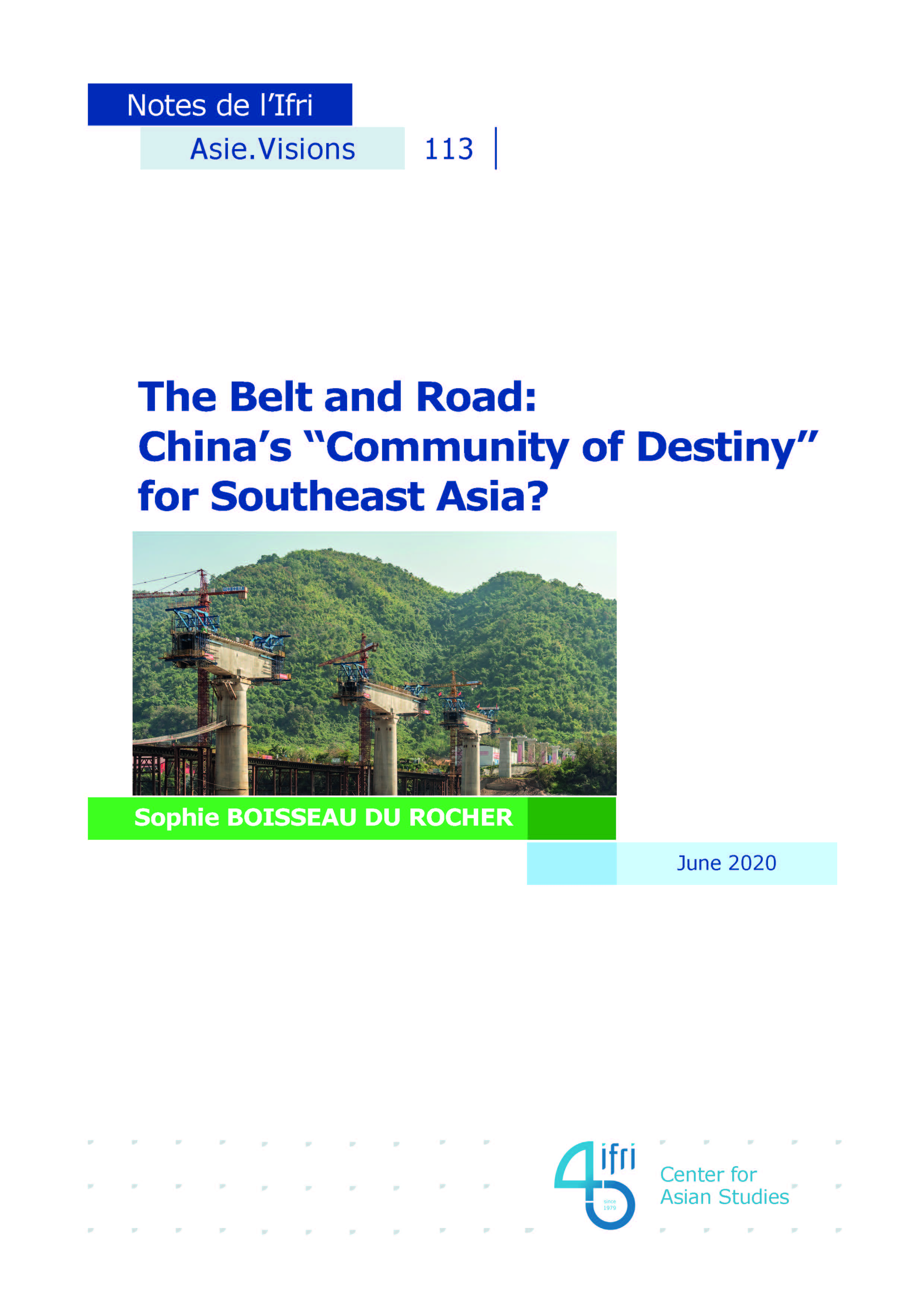The Belt and Road: China's "Community of Destiny" for Southeast Asia?

As a frontline zone and a pivot, Southeast Asia is both a testing ground and a showcase of China’s ambitions in developing a grand cooperative scheme. Creating mutually positive linkages is crucial for both partners, if not for the same reasons.
This paper explores the impact of the Belt and Road Initiative, China’s flagship program, on Southeast Asian States and ASEAN as an institution. The BRI is both good and mixed news for Southeast Asia. On paper, the program provides substantial economic stimulus for regional development, penalized by the absence of infrastructure, or by dilapidated ones; it should help better connect the region’s abundant natural resources, its growing markets and manufacturing hubs. Potentially, the BRI is a game-changer. Its transformative impact on economies can be paralleled with the economic stimulus created by the US and Japan in the early 1970s. What is striking is the pace of change: six years after its launching, measurable achievements can be observed. China is currently an unparalleled force for shaping Southeast Asia’s future.
However, nothing comes as free, especially considering the huge investment level. Yidai Yilu provides a branding opportunity for Chinese companies to be expansive, with smiling diplomatic presentation touting inclusiveness and “win-win”. But political, financial, ecological and/or security risks have not been sufficiently evaluated. It is leading to a mode of development with new rules of the game; new norms, regulations and practices that might not be compatible with previous standards or with the traditional opening of the region to global ones. Finally, China might be tempted to attach implicit strings and use the initiative as a convenient, yet vague, vehicle to expand its grip over the region, project itself as its “natural leader” and accelerate “a return to the center”. As the driver of major rapprochements, it could lead to decisive shifts in the alliance system; for Southeast Asia’s traditional partners, it induces ruthless, systemic competition in a context of intensifying rivalries.
Southeast Asia is central to China’s ambition to be reckoned as a global power. Beijing sees it as a key link in the connectivity chain. The region intends to capitalize on this perception to build its future. The Southeast Asian states’ position on the world stage and on trade routes is directly affected by the way they manage the densification of their connections with China and the resulting Chinese power leverage on their future; the lack of a coherent alternative and/or strong engagement for an ASEAN integration scheme might increase regional vulnerability.

Available in:
Regions and themes
ISBN / ISSN
Share
Download the full analysis
This page contains only a summary of our work. If you would like to have access to all the information from our research on the subject, you can download the full version in PDF format.
The Belt and Road: China's "Community of Destiny" for Southeast Asia?
Related centers and programs
Discover our other research centers and programsFind out more
Discover all our analyses
RAMSES 2024. A World to Be Remade
For its 42nd edition, RAMSES 2024 identifies three major challenges for 2024.
France and the Philippines should anchor their maritime partnership
With shared interests in promoting international law and sustainable development, France and the Philippines should strengthen their maritime cooperation in the Indo-Pacific. Through bilateral agreements, expanded joint exercises and the exchange of best practices, both nations can enhance maritime domain awareness, counter security threats and develop blue economy initiatives. This deeper collaboration would reinforce stability and environmental stewardship across the region.

The China-led AIIB, a geopolitical tool?
The establishment of the Asian Infrastructure Investment Bank (AIIB) in 2016, on a Chinese initiative, constituted an attempt to bridge the gap in infrastructure financing in Asia. However, it was also perceived in the West as a potential vehicle for China’s geostrategic agendas, fueling the suspicion that the institution might compete rather than align with existing multilateral development banks (MDBs) and impose its own standards.
Jammu and Kashmir in the Aftermath of August 2019
The abrogation of Article 370, which granted special status to the state of Jammu and Kashmir (J&K), has been on the agenda of the Bharatiya Janata Party (BJP) for many decades.







